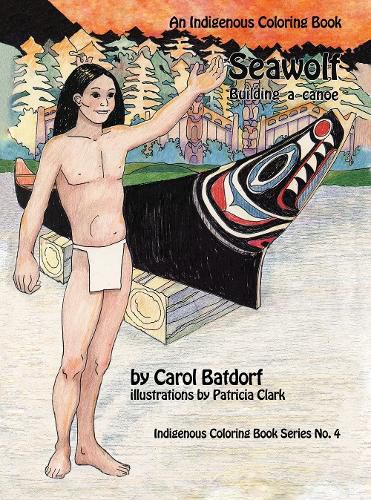Readings Newsletter
Become a Readings Member to make your shopping experience even easier.
Sign in or sign up for free!
You’re not far away from qualifying for FREE standard shipping within Australia
You’ve qualified for FREE standard shipping within Australia
The cart is loading…






This title is printed to order. This book may have been self-published. If so, we cannot guarantee the quality of the content. In the main most books will have gone through the editing process however some may not. We therefore suggest that you be aware of this before ordering this book. If in doubt check either the author or publisher’s details as we are unable to accept any returns unless they are faulty. Please contact us if you have any questions.
Canoes were important to the Indigenous people who lived long ago on the shores of the northwest coast. Wherever they went, they traveled by dugout canoes. Some of their canoes could carry fiftyand more people across open ocean water. others were small and were only used on quiet, sheltered bays. There were canoes made to be poled up rivers and those designed to carry huge loads of freight from place to place. There were light canoes made for women to use, fishing canoes, and even canoes for war. Only a carver who had the special skills, a gift the people called it, could carve a canoe from a cedar tree. Those men were honored for their work and were well paid with food, blankets, boxes or tools. It was considered a privilege for an Indigenous boy to be able to learn to make a canoe from such a carver. Koni, in our story, was such a boy. Once a canoe was carved and it proved to be a good craft, it was very valuable., The people respected it as if it were a living thing. They gave names to their canoes and took good care of them. This coloring book is about an Indigenous canoe and how it came to be. As you color the pictures, you will learn what it was like to be a First Peoples boy of long ago and how carvers transformed giant cedar logs into large, sturdy canoes. Since there is a lot of detail in the pictures, you might want to use felt pens or even colored pencils instead of crayons. Whatever you decide to use, most importantly, have fun!
$9.00 standard shipping within Australia
FREE standard shipping within Australia for orders over $100.00
Express & International shipping calculated at checkout
This title is printed to order. This book may have been self-published. If so, we cannot guarantee the quality of the content. In the main most books will have gone through the editing process however some may not. We therefore suggest that you be aware of this before ordering this book. If in doubt check either the author or publisher’s details as we are unable to accept any returns unless they are faulty. Please contact us if you have any questions.
Canoes were important to the Indigenous people who lived long ago on the shores of the northwest coast. Wherever they went, they traveled by dugout canoes. Some of their canoes could carry fiftyand more people across open ocean water. others were small and were only used on quiet, sheltered bays. There were canoes made to be poled up rivers and those designed to carry huge loads of freight from place to place. There were light canoes made for women to use, fishing canoes, and even canoes for war. Only a carver who had the special skills, a gift the people called it, could carve a canoe from a cedar tree. Those men were honored for their work and were well paid with food, blankets, boxes or tools. It was considered a privilege for an Indigenous boy to be able to learn to make a canoe from such a carver. Koni, in our story, was such a boy. Once a canoe was carved and it proved to be a good craft, it was very valuable., The people respected it as if it were a living thing. They gave names to their canoes and took good care of them. This coloring book is about an Indigenous canoe and how it came to be. As you color the pictures, you will learn what it was like to be a First Peoples boy of long ago and how carvers transformed giant cedar logs into large, sturdy canoes. Since there is a lot of detail in the pictures, you might want to use felt pens or even colored pencils instead of crayons. Whatever you decide to use, most importantly, have fun!